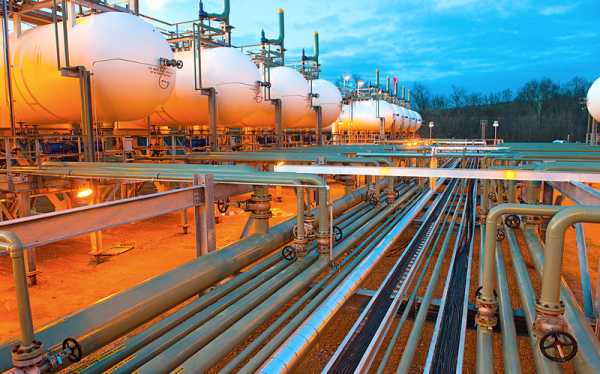
Such investments are also questionably compatible with the EU's decarbonisation strategy (Photo: Bilfinger SE)
EU money is driving the energy transition in Europe, especially in countries still heavily dependent on fossil fuels, but some governments are still looking to use EU public money to finance new fossil gas projects, despite their climate obligations.
Investing in fossil gas infrastructure is a risky business. Greenhouse gas emissions from fossil gas extraction, transportation and combustion, whether deliberate or inadvertent, greatly exacerbate global warming.
Such investments are also questionably compatible with the EU’s decarbonisation strategy at a time when governments should be prioritising renewable energy sources and energy efficiency to ensure a liveable planet for future generations. Expanding the fossil gas sector necessarily drives gas consumption, in turn undermining the binding targets of cutting 55 percent of greenhouse gas emissions by 2030 and reaching net zero emissions by 2050.
So, national authorities cannot spend EU public money on new fossil gas infrastructure and claim they are committed to the European Green Deal.
But in some European capitals, policymakers think otherwise.
According to a recent Bankwatch report, the Polish and Romanian governments plan to steeply increase investments via EU funds — including the cohesion policy, recovery plan and the modernisation fund — and spend nearly €4bn on new gas infrastructure and projects increasing gas consumption. If these plans materialise, they would simultaneously undermine efforts to cut emissions and threaten the economic sustainability and energy security in Poland and Romania.
Gdansk
In Poland, the authorities are planning to sink over €2bn by 2027 in EU financing into projects intended to import and transmit fossil gas and to expand gas-based heating. These include the new LNG terminal in Gdansk, new transmission and distribution networks, and subsidy schemes for gas boilers in buildings.
The Romanian government has also earmarked more than €1.7bn for fossil gas projects for the same period. That would be four times more than the previous financial period. These allocations are expected to grow, as more financing calls from the modernisation fund will be launched, from which Romania has access to €14bn by 2030. At the end of May 2023, new disbursements were made available and Romania received another €93m for gas pipelines.
When governments are using EU funds to build gas storage facilities, gas-fired units in power plants or LNG terminals — as the Polish and Romanian governments are planning to do — they are effectively endangering the future of their own citizens.
So, how is it still possible?
National systems planning in several EU member states are dominated by existing players that prefer antiquated and central solutions based on fossil fuels. But the main reason national authorities are still able to direct EU money to fossil gas projects is because of EU funds’ outdated design.
Sign up for EUobserver’s daily newsletter
All the stories we publish, sent at 7.30 AM.
By signing up, you agree to our Terms of Use and Privacy Policy.
While some governments are using the lack of clarity in EU law to utilise EU funds for gas infrastructure, it is obvious that such investments are incompatible with the EU’s climate objectives. The lack of precision in EU law regarding financing for gas infrastructure leaves too much room for interpretation.
It is hard for the European Commission to address member states’ energy plans, since each country decides its own energy mix individually. But EU institutions can help ensure that European public money doesn’t undermine, but rather facilitates the energy transition. For this, EU funds’ eligibility rules must be revised so that fossil gas investments are clearly excluded.
EU funds’ rules for the budget period of 2021-2027 were drawn up before Russia, Europe’s main fossil fuel supplier, started using its energy exports, primarily fossil gas, to advance its belligerent geopolitical agenda.
Curtailing fossil gas imports from Russia was the right way forward. But importing gas from other non-democratic regimes such as Azerbaijan, Qatar or Egypt cannot be considered as improving the EU’s energy security. If anything, such cooperation effectively legitimises these regimes’ horrendous human rights record.
Allocating EU funding for fossil gas could also prove to be a significant hit to state coffers. By building new gas infrastructure, the Polish and Romanian governments risk locking their energy sectors into continued emissions and an economically inefficient generation source as the global energy landscape shifts towards more sustainable alternatives.
So, it is now more urgent than ever to revisit the governance of EU funding to align it both with the new international energy landscape, and with the EU’s effort to minimise its reliance on highly volatile and climate wrecking fuels.
EU financial resources should be used to enable and scale up proven solutions such as renewable energy production, mainly appropriately sited solar and wind farms, and residential photovoltaics systems, while strengthening electricity grids and storage, but also reducing energy demand through energy efficiency measures.
Disqualifying fossil gas projects from getting EU financing would also guide countries such as Romania and Poland on their way to a more secure and resilient energy future.
Source: euobserver.com



